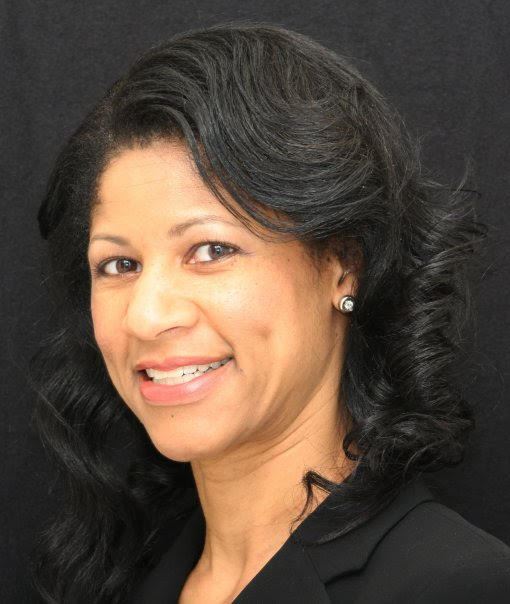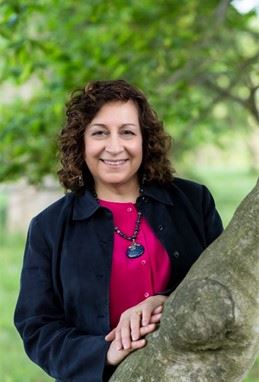Letter from the President

Spring is Here!
Spring is upon us and the newness of the season is refreshing. This is my favorite time of year. The blooming flowers, trees sprouting leaves, and frequent rain showers all remind us that change has arrived. Well, the seasons are much like what happens in an organization. Whether the changes are from an internal source, outside influences or another scenario, being flexible is key. That flexibility is exactly what the Chesapeake Planned Giving Council (CPGC) credits to navigating the past two years of constant change and flux for many of us.
CPGC continues to bloom in the region and beyond, thanks to the continued support of our committed sponsors. It is an honor to partner with such wonderful organizations - as we continue to bring educational programs to our members and supporters, and opportunities to network with professionals virtually (in-person soon).
Also, CPGC has an awesome board – their diligence, hard work and sacrifice are unrivaled. They make every effort to provide members and supporters with rich opportunities for educational learnings, networking with peers, and to ensure that CPGC is the go-to professional resource.
The members of CPGC have continued to be supportive while our organization has weathered the everchanging landscape of the past twenty-four months. We are grateful for the support. The work of CPGC revolves around providing educational programing that keeps members and others - informed and aware of the latest trends and happenings in charitable giving.
In March, we had our Lunch and Learn: Perspectives on Philanthropy, presented by Dave Smith, Founder & CEO at Heaton Smith Group. He presented the results of the Giving USA: The Annual Report on Philanthropy 2021, and highlights from the Giving USA: Leaving a Legacy Report published in November 2019. The information focused on trends in giving by individuals, corporations, and foundations and how the data can impact fundraising efforts.
If you are interested in increasing bequests and learning about a creative way some organizations have excited their donor base about legacy gifts, join us on May 18, our first in-person event since 2019. Our presenters will be Senior Vice President, Philanthropic Planning & Services for The Associated Jewish Charities, Michael Friedman, and Senior Director of Gift Planning at Johns Hopkins University & Johns Hopkins Medicine, Ann Doyle. Visit our website for updated information and to register.
Let me know if you have any comments, ideas for programming, or to would like say hello – send an email to Info@ChesapeakePlannedGiving.org. The season has changed, and things are blooming! Join us for CPGC’s Spring gathering – hope to see you there.
Sincerely,
Aquanetta Betts, J.D.
CPGC, President
LinkedIn @AquanettaBetts
About the Author
Russell A. Willis III, J.D., LL.M., is a tax lawyer and a consultant to other lawyers -- an advisor to the advisor -- on issues arising in connection with wealth transfers. Much of his practice is focused on structuring charitable contributions of closely held business and real property interests. Among his other engagements, Russ is a manager of noncash research for Charitable Solutions, LLC, a planned gift risk management consulting firm headed by Bryan Clontz. About three years ago, he launched a newsletter, the Jack Straw Fortnightly, analyzing current developments in the law -- both tax and nontax -- concerning the transfer of private wealth in this country. Russ has a law degree from St. Louis University and a master's degree in Taxation Law from Washington University in St. Louis. His undergraduate degree in English Literature is from Indiana University, Bloomington, and he has a master's degree in English from the University of Chicago. | Lost in the Footnotes Three years ago, seems like forever, I gave a paper at the national conference in Las Vegas on accelerating life income gifts. There were two scenarios, a charitable remainder unitrust and a gift annuity. In each case, to keep it simple, we looked at single life arrangements and relegated the two-life scenarios to footnotes. There is only so much you can cover in an hour and a quarter. But there were complexities lurking in those footnotes, which maybe should get more attention, especially as we seem to be seeing an uptick in these transactions lately. If Jane wants to accelerate the trust remainder to the designated charity, she needs to get Sally on board, because Sally does have an interest in the trust, albeit contingent on her surviving Jane and defeasible by Jane exercising her power to revoke. And then we have to decide, should Jane release her power to revoke or not? Even if Jane does not release her power to revoke, we still need Sally to participate in accelerating the remainder, but she would not be in a position to claim a charitable deduction, as her defeasible interest has no ascertainable value. Or at least that is the position IRS took thirty odd years ago in a letter ruling, PLR 8805024. No deduction for the holder of the successive interest, in that case a spouse, because there was no "ascertainable assurance" her interest "[would] ever pass to charity." Presumably meaning she might not survive, and/or the settlor might revoke. But obviously she did hold a transferable interest, albeit of zero value. Absent her assigning this interest to the remainderman, there would be no merger. The trust would continue to pay out over the settlor's life, but directly to the remainder org. And then if she survived the settlor and he had not exercised his power to revoke, she would step into the income stream. So it is necessary for her to participate in the transaction, and her assignment does "assure" that her interest will pass to the remainder org, not at some future date, but immediately. Nonetheless, the letter ruling limited the taxpayers to deducting the present value of the settlor's life interest only. Twenty years later, IRS issued another letter ruling, PLR 200802024, approving the workaround suggested above -- the settlor first releases her power to revoke, completing the gift to the successor, and only then do they each assign their separate interests to the remainderman. We might then have to calculate separately the present values of Jane's life interest and Sally's deferred, contingent life interest, and claim the deductions on separate returns, but these would add to the present value of the two lives combined. If the successor were a spouse, we might still have to state the values separately even on a joint return. One might ask, is it really necessary to perform this seemingly empty exercise? if we have Sally on board, isn't it clear what everyone intended? Would IRS actually make an issue of this? Hard to say. |
THE VALUE OF MEMBERSHIP
Professional
|
|
Educational
|
|

 Elise Saltzberg
Elise Saltzberg Russell A. Willis III, J.D., LL.M
Russell A. Willis III, J.D., LL.M